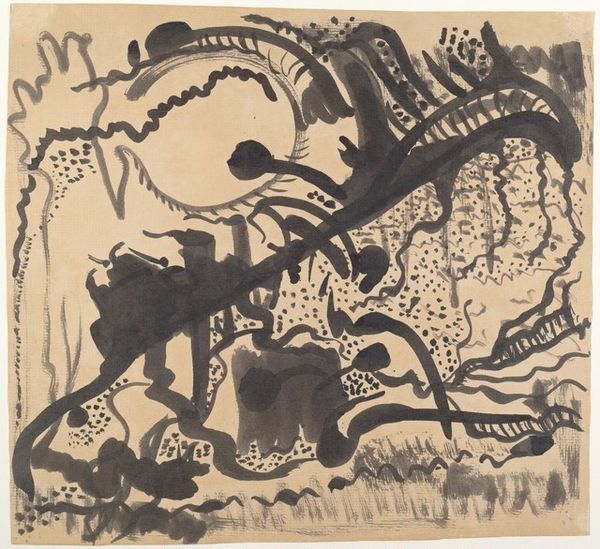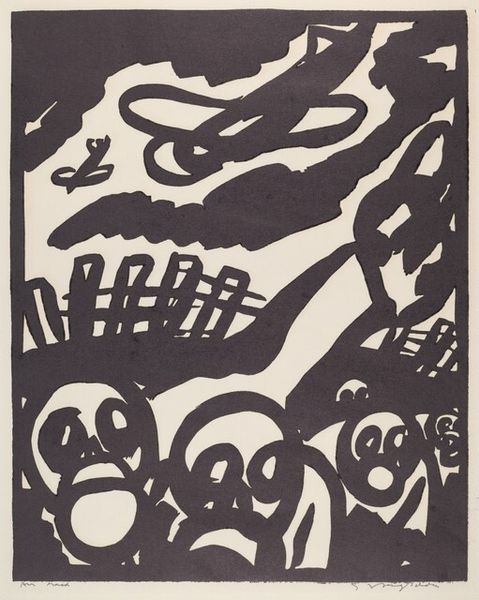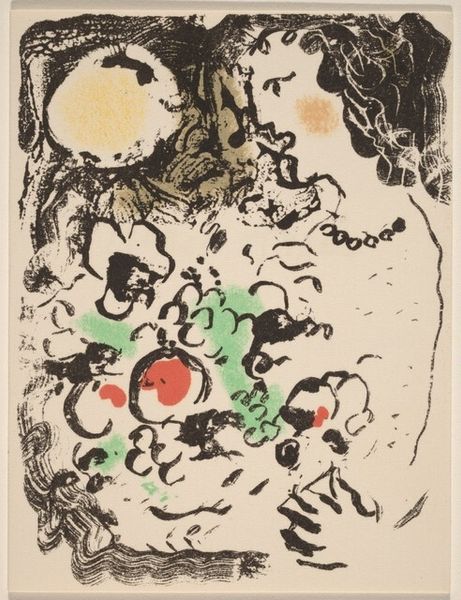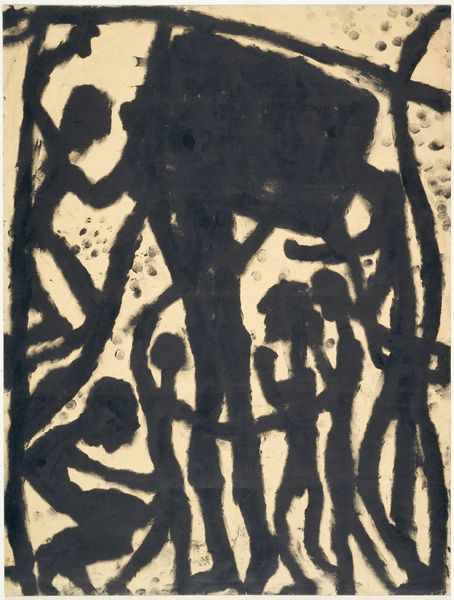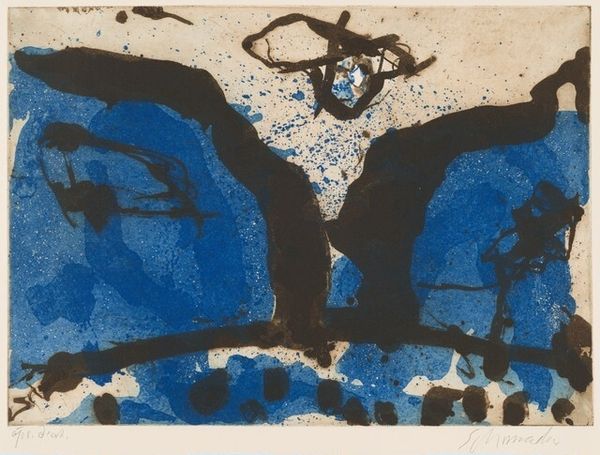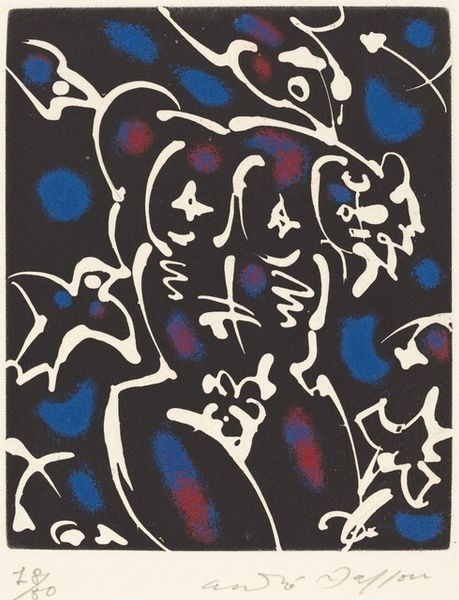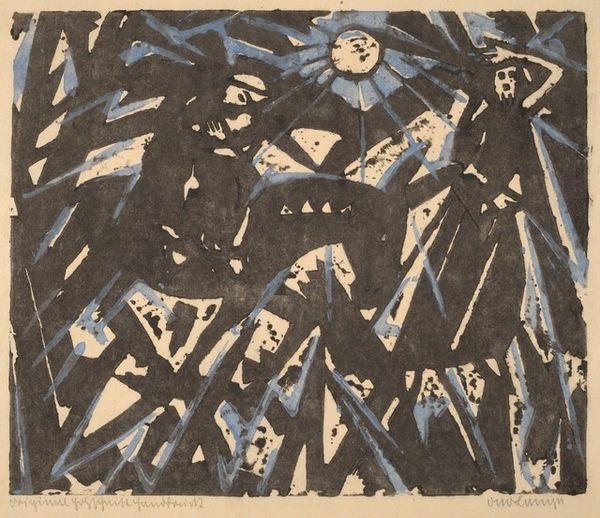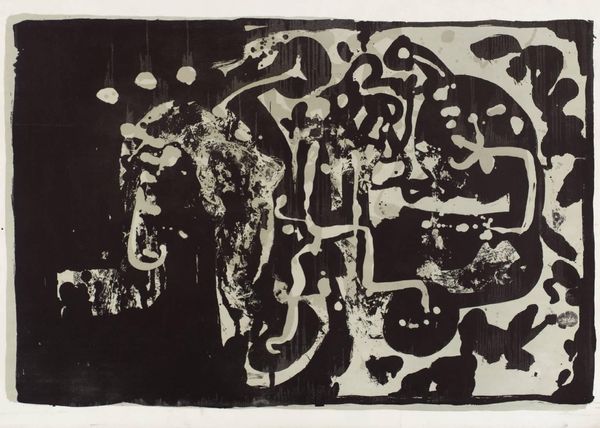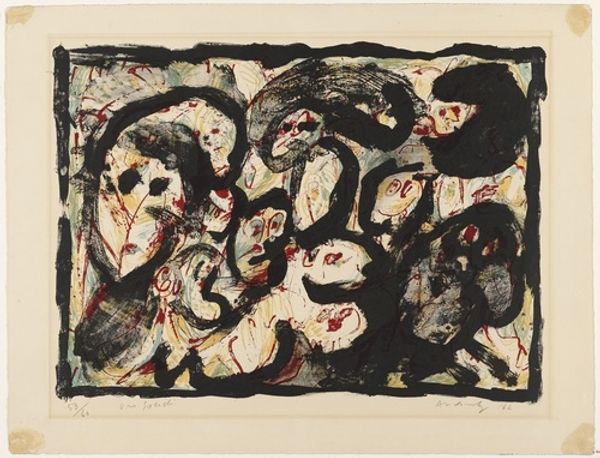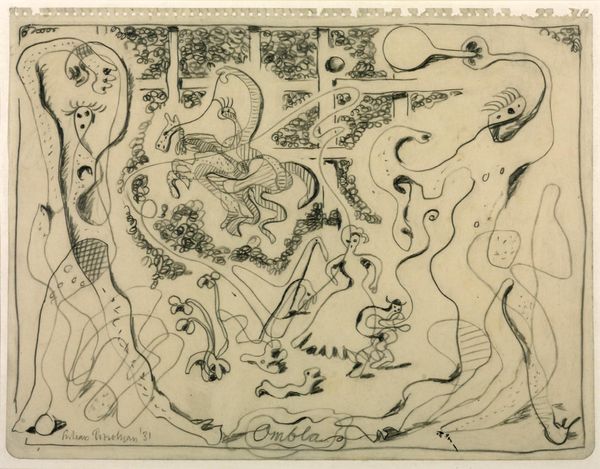
#
action-painting
# print
#
figuration
#
linocut print
#
geometric
#
abstraction
#
modernism
Dimensions: image: 45.2 x 60.3 cm (17 13/16 x 23 3/4 in.) sheet: 54.4 x 69 cm (21 7/16 x 27 3/16 in.)
Copyright: National Gallery of Art: CC0 1.0
Curator: Looking at David Smith’s “Don Quixote” from 1952, I'm struck by its restless energy. It's a linocut print, all sharp angles and heavy black ink—chaotic, almost. What do you make of it? Editor: Chaotic is a great word. But looking closely, the rough-hewn quality suggests a very physical, labored process. Linocut isn't exactly known for subtlety; it’s demanding, repetitive. I imagine Smith really wrestling with the material here. Curator: I feel like the abstraction hints at Don Quixote’s fractured mental state, lost in his own fantasies. The crude, bold strokes become visual metaphors for his misguided bravery, a distortion of reality. Does that make sense? Editor: Absolutely, the "means" here amplifies its thematic resonance! It wasn't like he was sitting at a desk drafting out sketches. No, with this type of labor, you commit directly to an image, carving it into the lino. One cut at a time... Curator: There's a raw immediacy to that. It makes me think of Smith, channeling Quixote's impetuousness, driven by his creative passions— perhaps jousting with the printmaking process itself? What you get as a result of labor are raw materials transformed through strenuous artistic efforts. Editor: And it matters where this image gets seen and distributed; the prints allowed him a relatively easy mode of production and circulation, bringing this character of quixote outside traditional artistic places. Curator: It seems to bridge abstraction and figuration; the mechanical looking bits resemble both cogs and organic matter intertwined, almost representing his conflict between dreaming and waking reality. Editor: Yes, a critical viewpoint to highlight that his creative endeavor is not without social context; the print makes Don Quixote, a product for us, within society. Curator: Exactly. Ultimately, it distills Don Quixote to something visceral and turbulent, a stark visual poem rather than a literal depiction. It stays with you, this raw emotion… Editor: The rawness sticks with you. Looking at Smith grapple with his own medium, you know what I mean? His actions give material shape to intangible cultural figures, bringing labor and historical icon together.
Comments
No comments
Be the first to comment and join the conversation on the ultimate creative platform.
